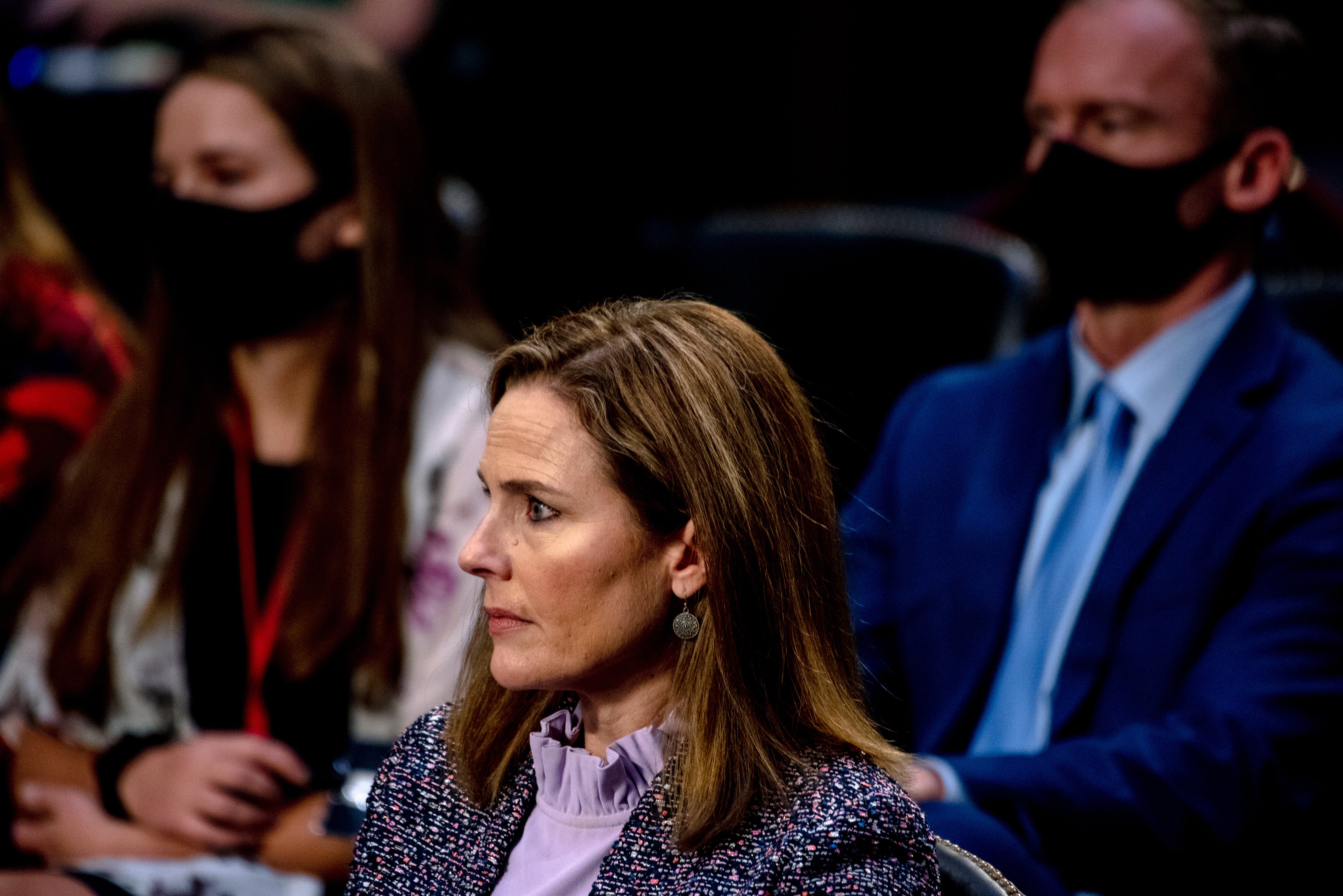In English, please? Barrett asked to explain legalese
Lawmakers are asking Supreme Court nominee Amy Coney Barrett to school the public in the law and explain legal terms in plain English

Your support helps us to tell the story
From reproductive rights to climate change to Big Tech, The Independent is on the ground when the story is developing. Whether it's investigating the financials of Elon Musk's pro-Trump PAC or producing our latest documentary, 'The A Word', which shines a light on the American women fighting for reproductive rights, we know how important it is to parse out the facts from the messaging.
At such a critical moment in US history, we need reporters on the ground. Your donation allows us to keep sending journalists to speak to both sides of the story.
The Independent is trusted by Americans across the entire political spectrum. And unlike many other quality news outlets, we choose not to lock Americans out of our reporting and analysis with paywalls. We believe quality journalism should be available to everyone, paid for by those who can afford it.
Your support makes all the difference.“What does it mean?” and “Can you explain?” were questions President Donald Trump’s nominee to the Supreme Court Judge Amy Coney Barrett was asked repeatedly Wednesday on her second day of answering questions from lawmakers.
Lawmakers sought at various points to have Barrett explain legal terms in plain English Here are a few of the legal ideas she was asked about, her answers and why they're important:
SEVERABILITY
Just minutes into Wednesday's hearing Barrett was asked to explain the doctrine of “severability.” It's a term important to an upcoming fight at the Supreme Court over the Affordable Care Act, the Obama-era healthcare law.
Severability has to do with what happens when judges look at a law and decide one provision is unconstitutional. The next question becomes whether that provision can simply be removed from the statute or, as Barrett explained, “whether that provision is so central” that "the whole house of cards collapses” and the entire statute falls.
She explained, “So if you picture severability being like a Jenga game, it's kind of: If you pull one out, can you pull it out while it all stands or if you pull two out will it still stand?”
One of the first cases Barrett could be asked to decide, assuming she joins the court before November, has to do with whether a provision in the Affordable Care Act is now unconstitutional and, if so, whether it can be severed from the law. The Trump administration says the whole law must go. But many observers see the court going the severability route and letting the rest of the ACA stand, despite Democrats' cries that Barrett could vote to overturn the law.
__
BUFFER ZONE or BUBBLE ZONE
Barrett was also asked about an opinion she joined in 2019 upholding a “buffer zone” law from Chicago. It's important because it's one of the few cases touching on abortion that she's ruled on. Democratic lawmakers fear that as a justice she would vote to overturn or cut back on Roe v. Wade, the landmark 1973 case in which the court established the constitutional right to an abortion.
“Buffer zone” or “bubble zone” ordinances restrict activities around abortion clinics. In Chicago, anti-abortion advocates sued over a law that bars them from approaching within 8 feet of another person near a clinic if their purpose is to protest or to try to speak to another person about abortion. They argued that the law restricts their freedom of speech.
Sen. Mike Lee, R-Utah, suggested Barrett's vote in the Chicago case showed she is able to set aside her personal beliefs and uphold “limits on pro-life activists." But the opinion Barrett joined was no ringing endorsement of buffer zones.
The opinion, written by Judge Diane Sykes, said that as lower court judges they had no choice but to uphold Chicago's law because the Supreme Court in 2000 had upheld a similar, even more expansive, Colorado ordinance. While the Supreme Court had “deeply shaken” the foundation of that case in subsequent years, it had not overruled it, she wrote.
Barrett wouldn't be bound by that same constraint on the Supreme Court.
__
STANDING
Sen. John Cornyn, R-Texas, sought to distinguish judges from policy-making lawmakers. He asked Barrett about rules that “keep the judiciary in its appropriate lane,” including the idea of standing. Standing has to do with whether someone has the right to go to court and sue.
“Standing means that you can't just come to court ... and say ‘I don’t like that act and I think it's unconstitutional.' Standing means that you actually have to have suffered what the law calls a concrete injury, so it has to have affected you in some way. ... People can't come to court to air policy disagreements only,” Barrett said.